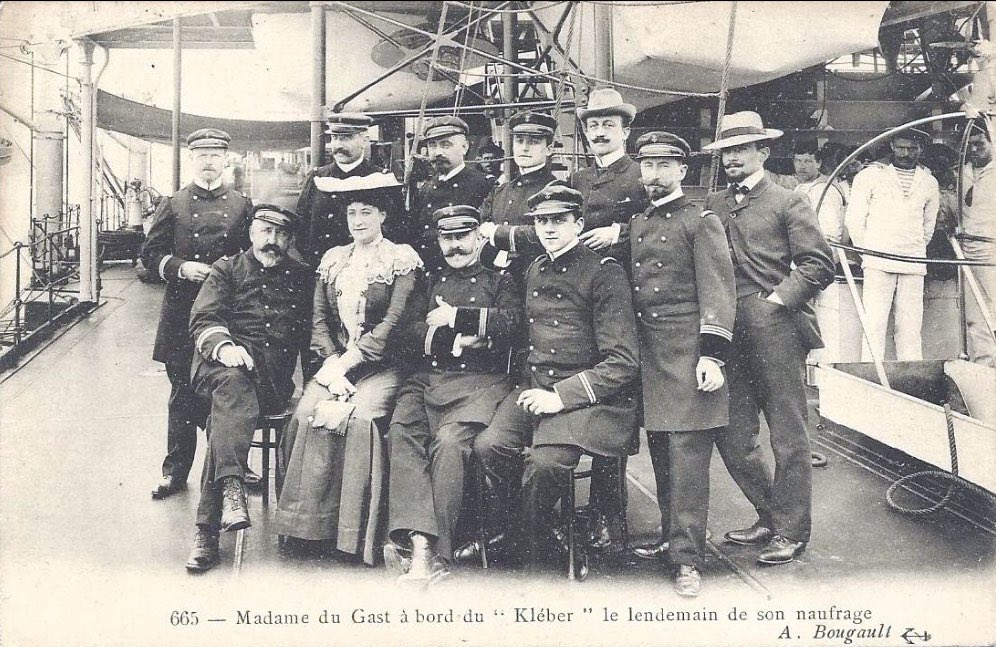
This is Camille du Gast (1868-1942). She was a balloonist, parachutist, fencer, tobogganist, skier, horse trainer, concert pianist & singer. She was the second woman to compete in an international motor race & was embroiled in the scandal of La Femme au Masque.
Thread!
Thread!
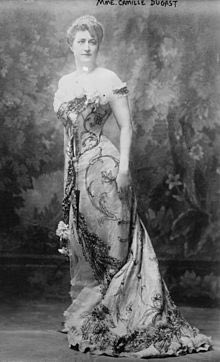
Camille was born in Paris in 1868 & from a young age was described as a “garçon manqué' (tomboy). She married wealthy businessman Jules Crespin in 1890. Crespin was the manager and majority shareholder of Dufayel, one of the largest department stores in France. 
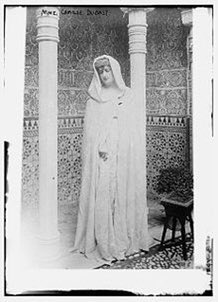
The couple has a daughter, but sadly Jules Crespin died young, leaving Camille heartbroken, but a very rich widow
After her husband's death she began to travel extensively, including crossing Morocco on horseback. She was active on the Parisian social scene, being known as "one of the richest and most accomplished widows in France".
She took up tobogganing, skiing, shooting, horse training, became became a concert pianist too. Gordon Bennett described her as "the greatest sportswoman of all time".
The La Femme au Masque affair dragged Camille into three court cases in Paris in 1902. The lurid details were reported around the world.
In 1885 Henri Gervex painted this; La Femme au Masque (The Masked Model). The model was 22-year-old model Marie Renard, but her identity was never publicly revealed, causing a great deal of speculation as to who the woman in the painting was. 

Marie Renard also sat for Édouard Manet, Berthe Morisot and John Singer Sargent. This is her, in Paul-César Helleu’s “La Lettre”, painted in 1880. 
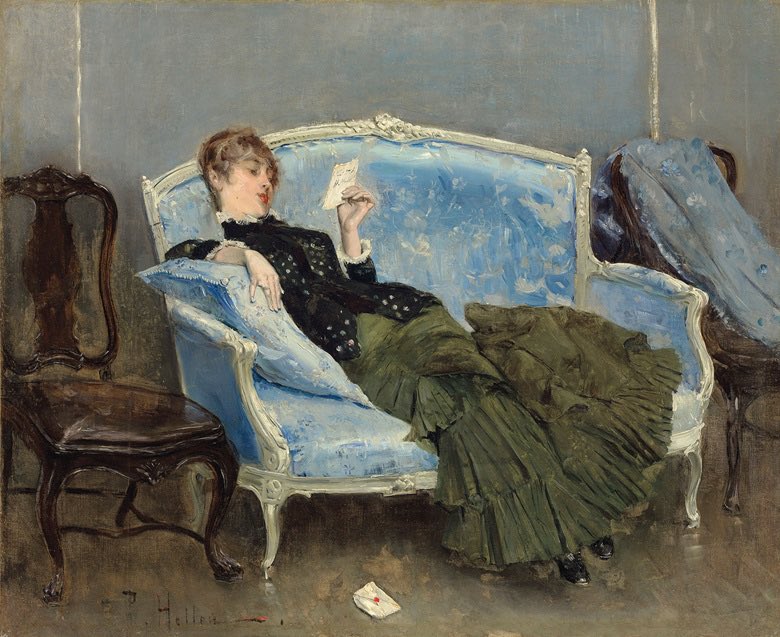
Henri Gervex’s La femme au masque created a furore when it was first exhibited at the Salon. One man was so convinced that his wife was the sitter that he challenged the artist to a duel, and was wounded on the field of combat. 
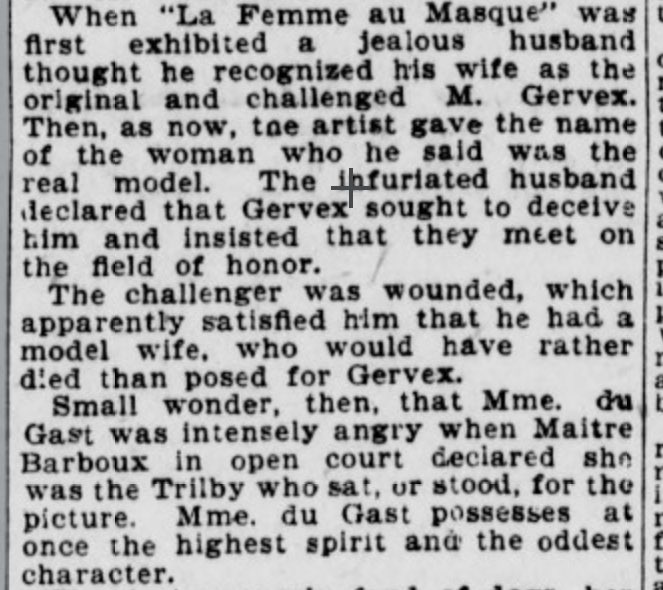
Back to Camille. In 1902, Camille took her estranged father & brother to court over an inheritance dispute. During proceedings Maître Barboux, the opposing barrister, produced a photograph of La femme au masque & accused Camille of being the nude mystery woman.
Absolute scenes.
Camille instantly brought legal action against Barboux. BUT even though both Henri Gervex and Marie Renard appeared in court to testify the woman was not Camille - she still lost the case!
After Barboux left the court he was confronted by M. de Marcilly and Hélie de Talleyrand-Périgord, the Prince de Sagan, Camille’s close friend, admirer and suitor, who punched him in the face and called him 'an insulter’.
This assault resulted in another court case. Following a guilty verdict, the Prince was fined 500 francs and de Marcilly 100 francs
The scandal was reported around the world. The press waxed lyrical about her exotic appearance, demeanour, achievements and intellect. (Front page of the newspaper La Vie Illustrée, that was published on 25 July 1902) 

After the scandal, Camille devoted herself to motorcar racing and became known in the press by the sobriquets l'Amazone and la Walkyrie de la Mécanique (Valkyrie of the motor car). 

In 1904 the Benz factory team offered du Gast a race seat for the Gordon Bennett Cup because of her performance in the 1903 Paris–Madrid, but by then the French government had barred women from competing in motorsport, citing 'feminine nervousness'.
Around 1910 her daughter attempted to have her murdered in her home in the middle of the night. Described as a “jealous and mercenary individual”, her daughter had been trying for a long time to extort money from her famous mother for a long time.
The daughter hired a gang to break into her mother’s house in the middle of the night and kill her - leaving her free to inherit the east family fortune. Things did not go to plan and Camille actually confronted her would-be assassins, who were so shocked they turned tail & fled
But her daughter’s betrayal broke Camille’s heart & she devoted herself to her beloved animals for the rest of her life. She was president of the Société protectrice des animaux (Society for the Prevention of Cruelty to Animals, SPA) & fiercely campaigned against bullfighting
Camille is buried in the Crespin family tomb at the Pere Lachaise Cemetery in Paris. In 1929 she was honoured when the French Government named the rue Crespin du Gast in the Paris district of Menilmontant, a name that is still preserved today.
Apologies for all the spelling & grammatical errors - I have had wine.
• • •
Missing some Tweet in this thread? You can try to
force a refresh
